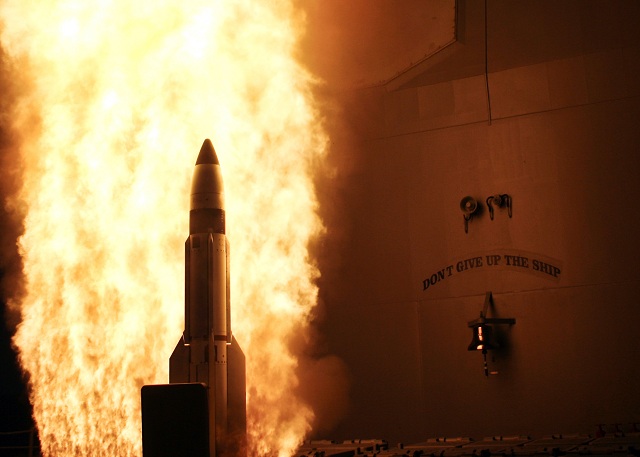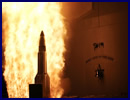|
|
| a |
Naval
Forces News - USA |
| |
|
| |
| |
MDA
test marks first time Aegis uses information from satellites to track,
intercept target |
| |
In
business, time is money. When it comes to missile defense, time is even
more valuable. The sooner an attack is detected the better the chances
it can be destroyed. The U.S. Missile Defense Agency (MDA) took a giant
step in shaving that detection time on Feb. 13 when the USS Lake Erie’s
Aegis Ballistic Missile Defense (BMD) system used remote tracking information
provided by satellites to intercept a medium range unitary ballistic
missile target for the first time. |
|

A SM-3 Launches from USS Lake Erie during a test
(File Picture: US Navy)
|
|
After
receiving information from space tracking and surveillance systems satellites
integrated through Lockheed Martin’s Command and Control, Battle
Management, and Communications (C2BMC), the Lake Erie launched a Raytheon
Standard Missile-3 Block IA missile before its SPY-1 radar detected
the target. The ship’s Aegis system, also developed by Lockheed
Martin, guided the missile using information from the satellites until
the target was detected and tracked by the SPY-1 radar. |
|

USS Lake Erie
(Picture: US Navy)
|
|
“Aegis
has achieved many firsts, but using accurate tracking information from
a satellite to flexibly enable the capabilities of the sea-based Aegis
BMD system may prove to be one of the program’s most significant
milestones,” said Nick Bucci, Lockheed Martin’s director
of BMD development. “For a long time, many have believed the best
path forward for missile defense is an architecture that combines flexible
sea-based defenses with persistent space-based capabilities. This test
proves that technology and that architecture can be a reality.”
The test off the Hawaiian coast marks the 10th time in three years that
the Lake Erie and her crew have successfully performed at-sea operations
against cruise and ballistic missile targets using the second-generation
Aegis BMD system.
Aegis BMD’s recently upgraded signal processor enables the Navy
to defeat more sophisticated ballistic missile threats using improved
target identification capabilities.
The MDA and the Navy are jointly developing Aegis BMD as part of the
U.S.’s BMD System. The Navy has 26 Aegis BMD-equipped warships,
with the number expected to increase to 32 by 2014. |










